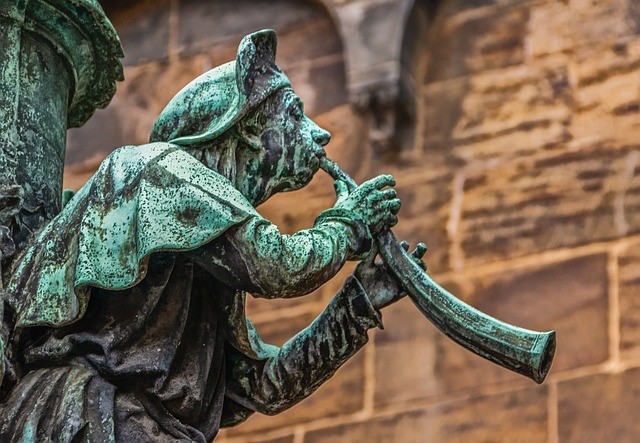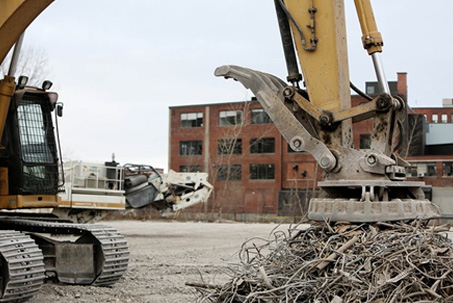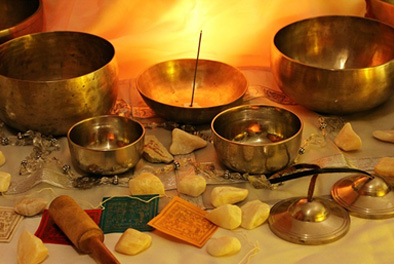Copper is widely known for many things. Most of us know it as the first metal discovered and used by man, preceding even gold and silver, yet strangely not as popular in ancient documents since it’s been utilized mostly for utilitarian applications. Because of the many useful properties of copper, major industries, such as transportation, construction, and telecommunication rely heavily on its production. As such, copper is also known as a barometer for the global economy, because its production reflects the current and future state of those industries.
In North America, we know copper as the material that make up many of our prominent landmarks, and one of the main reasons they still stand to this day. Best examples include the Library of Parliament in Ottawa, Ontario and the Massachusetts State House, which both have a copper roof. We also know that The Statue of Liberty in New York Harbor is also made mostly of copper. But a lot of us didn’t know that most of the old copper structures like The Statue of Liberty haven’t always been green. They were actually shiny, metallic-looking at first. The newly laid copper roof of the Massachusetts State House shows us a glimpse of how those structures used to look like.
But why did their color change? Have they been painted so they won’t rust like most steel structures? While coating the surface of metal certainly helps prevent corrosion, copper is different from other metals because it has its own way to protect itself from corrosion. In fact, the green color that it develops overtime is made up of a layer of patina, which serves as it shield.
What Is Patina?
Patina refers to the result of any aging process that causes discoloration or fading of a material’s natural color. The transformation of copper from shiny, reddish brown to green is actually the most popular type of patina formation. Bronze and brass undergo the same process, but that’s just because their main component is copper.
This aging process is generally known as oxidation. When a material, organic or inorganic, is exposed to oxygen, the oxygen molecules combine with the molecules that make up that material and create a chemical reaction. The kind of chemical reaction depends on the type of material involved. For instance, diced potatoes or fruits turn brown when exposed to the air. Iron rust in a moist environment. The oxidation that these materials undergo is actually a process of degradation, since it eats away at the material layer by layer until it’s reduced to dust.
Copper, on the other hand, experiences oxidation rather distinctly. Chemicals in its environment that make contact with its surface also cause reaction, but instead of breaking down on a molecular level overtime, it creates a layer of protection that prevents those chemicals from further digging into its core.
It’s important to note that oxidation isn’t always caused by oxygen. A lot of other elements and substances can cause the same reaction on metals. Quite many chemicals, apart from those that are naturally present in the air, can oxidize copper, including ammonium chloride crystals, copper sulfate and ammonium sulfate. These chemicals are used to bring out that uniquely elegant, greenish color of copper.
How to Oxidize Copper
When oxidized, copper can change into a shade of green, but not instantly. It normally takes many years of constant exposure to natural elements before that elegant, jadish green shade appears. In fact, you will see it transform into different shades of brown before it turns green. Fortunately, the oxidation process can be expedited so you can achieve the shade that you desire for your copper items. Here’s one way to force oxidize copper.
Most harsh substances are capable of oxidizing copper, but you don’t need to buy special acids just for that. Basic products like vinegar and salt can have the same effect. All you need is enough amount of these products to submerge your copper item for a certain period. So let’s say your item is just a piece of copper jewelry that you’d like to give a rustic, green appeal.
The first step is to thoroughly clean the jewelry to get rid of all traces of oil and dirt. After rinsing away all the suds, sprinkle a little bit of baking soda and scrub the surface of the jewelry with steel wool. That should remove any excess contaminants or coating stuck on the surface and allows the copper layer to be exposed to the oxidizing agent. Then wash off the baking soda without touching the jewelry with your skin.
Depending on the size of the jewelry, mix three parts of vinegar and three parts of salt well until you can no longer see salt crystals. Put the item into the mixture and let it soak for at least 30 minutes. After it’s fully soaked, take it out of the container and place it on a clean paper towel. Don’t wipe it; let it dry on its own. You can sprinkle a little bit of salt on its surface to further speed up oxidation.
Knowing simple ways to oxidize copper lets you stretch out your creativity. It can even open doors of opportunity for you in the craft industry. Nevertheless, don’t forget that it’s also important to get your copper supplies from a reputable supplier. Otherwise, the metal you will work with might not react correctly with the chemicals you will use. Top suppliers in North America such as Rotax Metals offer the highest quality supplies on the market. You might want to put them on your list.
Sources:



 Ever wondered how scrapyards sort mountains of junk to separate the recyclables from the non-recyclables or to identify which materials are reusable for which applications? They use a variety of techniques from manual to machine-aided segregation since they are dealing with different types of materials.
Ever wondered how scrapyards sort mountains of junk to separate the recyclables from the non-recyclables or to identify which materials are reusable for which applications? They use a variety of techniques from manual to machine-aided segregation since they are dealing with different types of materials. Before brass became one of copper’s most essential alloys, it was first thought to be just the result of a flaw in the manufacturing process, considered as either bronze or copper depending on which it resembles more. Today, brass is identified as a metal on its own just like bronze and copper as well as extensively utilized for a wide array of applications. But where does brass come from and what applications is it used for?
Before brass became one of copper’s most essential alloys, it was first thought to be just the result of a flaw in the manufacturing process, considered as either bronze or copper depending on which it resembles more. Today, brass is identified as a metal on its own just like bronze and copper as well as extensively utilized for a wide array of applications. But where does brass come from and what applications is it used for?